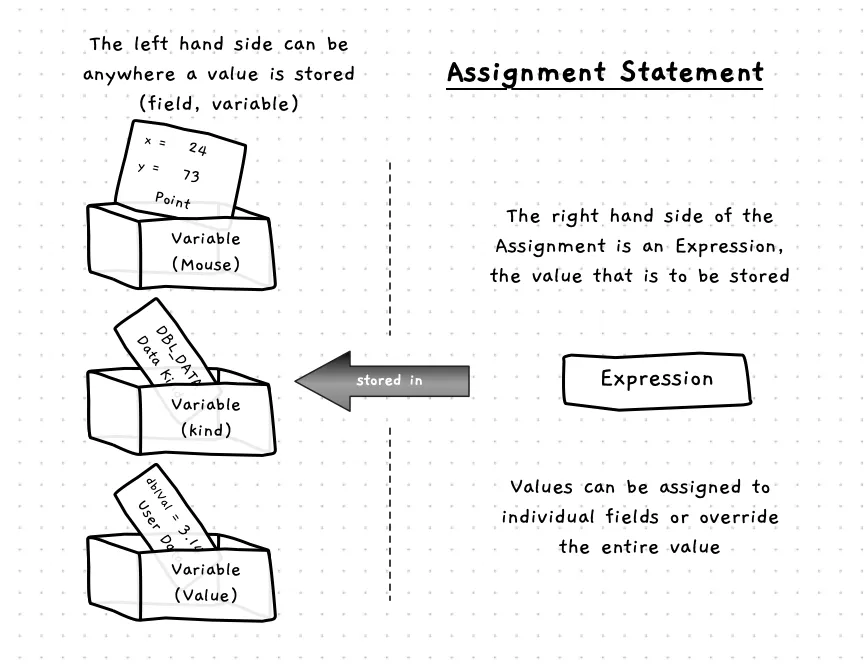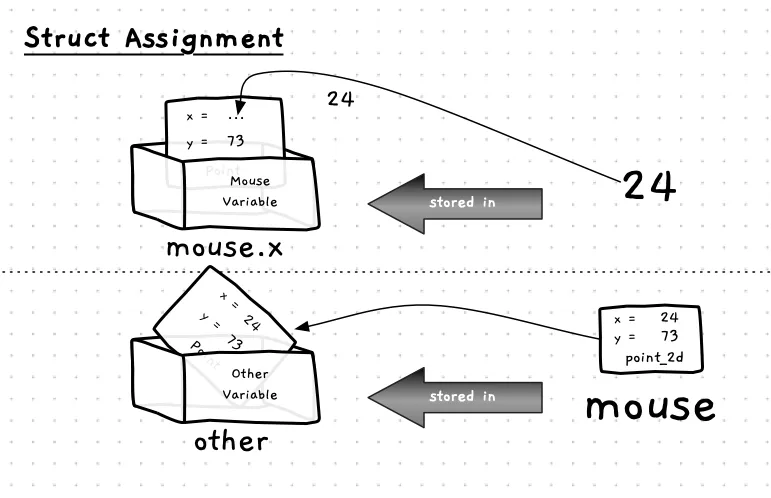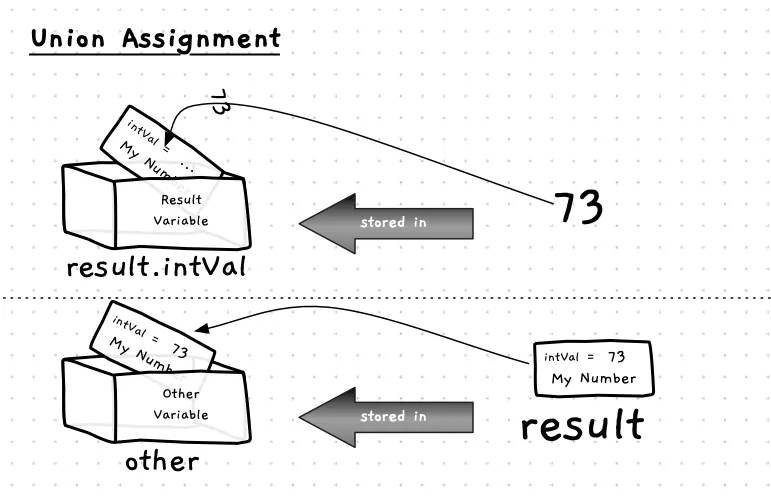Assignment Statement
The assignment statement allows you to store a value in a variable. The right-hand side of the assignment is an expression that calculates the value to be stored. The left-hand side is a variable, indicating where the value is to be stored.
With the addition of the custom types you can now also store values in fields of a record or union, or copy across an entire struct in one go.

Struct Assignment
The assignment statement can be used to assign a value to a struct’s fields, or to copy all fields from an existing struct’s value.

In C/C++
To access a field, you use the dot operator (.) between the variable name and the field name. For example, var1.field1. This accesses field1 within the var1 variable. The value on the left-hand side of the dot needs to be a struct. The identifier on the right-hand side is the name of the field to access.
You can chain multiple field accesses together if you have nested structs. For example, var6.field.name would work if field referred to another struct type that contained a name field.
Union Assignment
The Union is similar to a Record in that you can assign values to a union via its fields or by copying another union value into the variable or array element. The difference with the Union is that it has only a single value, with the different fields giving you different interpretations of that data.

In C/C++
As with structs, you can access individual fields within a union using the dot operator. In this case the left-hand side of the dot needs to be a union value, the right-hand side is the identifier of the field you want to access.
Assignment - Why, When, and How
The role of assignment does not change, but now you can use this to assign entire struct values or assign values to individual fields within your structs and unions. This gives you the ability to work with the whole struct, while also having the tools to access parts of it. You can then move between these two levels of detail as you need. In one place you can store a value in a field of the struct, and in another you can pass the whole struct to a parameter in a function or procedure call.